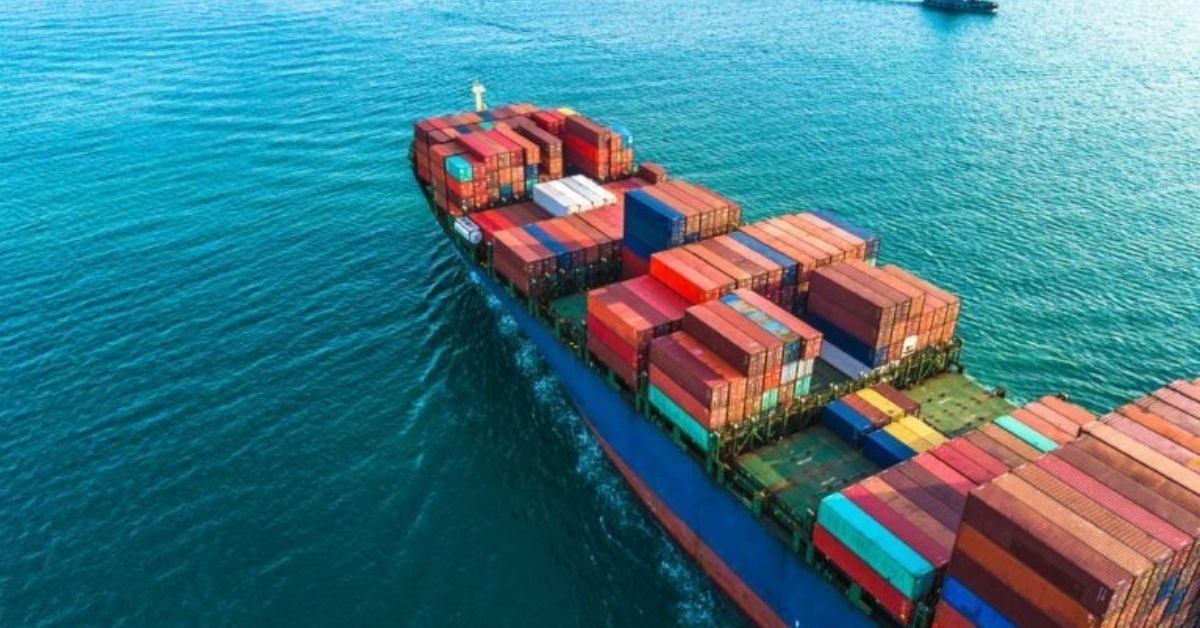According to a recent analysis of industry data, the trend of container freight rates stabilising or easing on larger trade routes out of India that began in April has persisted into this month.
The average westbound contract rates on the India-Europe trade have dipped slightly from the end of April levels. Rates are now around US$7,615/teu and US$8,015/feu from West India [Jawaharlal Nehru Port (JNPA)/Nhava Sheva or Mundra Port] to Felixstowe/London Gateway (UK), down from US$7,765 and US$8,145, respectively, in April. Ex-West India to Rotterdam rates have dropped to around US$7,015 per teu and US$7,045 per feu, respectively, from US$7,415 and US$7,445.
Eastbound rates are also at the same levels as they were at the end of April — at US$1,925/20-foot container and US$2,045/4-foot container for cargo shipped from Felixstowe/Rotterdam to West India.
Contract rates for Indian cargo to the United States have seen no changes from the April trends – averaging at US$10,100 per teu box and US$12,700 per feu box for bookings to the US East Coast (New York), and at US$11,725 and US$14,765, respectively, for the US West Coast (Los Angeles). For the West India-US Gulf Coast trade, rates have remained stable at US$10,900 per teu and US$13,700 per feu.
However, in the reverse direction, there has been an increase of 10-15%, on average, for bookings from the US East/West/Gulf coasts to West India.
With sustained demand, average contract rates on intra-Asia trades have either remained static or have moved up from the levels reported in April. For shipments from West India to South China (Yantian), rates are hovering at around US$600 per 20-footer and US$900 per 40-footer, up from US$500 and US$750, respectively, as at the end of April. For the West India-Singapore trade, rates have increased to US$450 and US$650, from US$400 and US$600 in April.
For South China-West India, 20-foot/40-foot rates are now hovering at around US$2,400 and US$4,500, compared with US$2,000 and US$3,800 in April, according to the analysis.
“The rates have not bounced back, and they are still at least 2-3x compared to pre-pandemic levels,” Sylvester D’mello, director of operations at Indian digital forwarder Freightwalla, told Container News.
“However, they are now comparatively lower than a few months ago. The Freight Index around the world is now pointing at the lower end. There could be more than one reason for the declining freight rates. Lockdowns at Chinese ports have begun to cease, and the unwinding of ports’ congestion and ease of pressure for space also plays a part in driving down the spot rates. Weakness in rates is also seen in the Asia-West Coast route, reflecting the previous speculation on freight rates.”
According to Mr D’mello, decreased freight rates on some routes cannot be the sole reason for implying low demands. “Important ports across Asia, Europe and the US are off their peaks. Blank sailing has also been on a low, but it is continuous due to multiple reasons such as reduced import demands and congestion. Vessel capacity has improved, but it has not been on the full scale,” he explains.
While that provides some relief for Indian shippers – badly bruised by rocketing rates, the resurfacing of booking cancellation charges has become another pain point for them. All major carriers operating to/from India have begun collecting container no-show fees for bookings that fail to materialise for vessel loading.
At the same time, Indian exports continue to show impressive growth, having hit a new high of US$40 billion last year.
“The outstanding accomplishments of the exporters have consistently not only helped the economy to reap rich dividends but will also support our endeavour to become a US$5 trillion economy by 2025,” said A. Sakthivel, president of the Federation of Indian Export Organisations (FIEO), in a statement. “Starting the fiscal with such an impressive beginning will further add to the motivation of the exporting community for much higher growth during the financial year.”
As the challenges facing Sri Lanka’s Colombo Port are unlikely to loosen up any time soon, Indian east coast ports have ramped up their efforts to position themselves as alternative port call options for mainliners serving the subcontinent market. But there’s scepticism among carrier leaders about infrastructure and productivity standards at Indian terminals.
“The southern Indian ports like Tuticorin, Cochin and Ennore need to be able to accommodate larger vessels in terms of length/beam and draft, to be able to offer themselves as viable alternatives to Colombo,” said Sunil Vaswani, executive director of the Container Shipping Lines Association (CSLA).
He added, “Ennore has a draft limitation of 15 metres, whereas Tuticorin can accommodate vessels up to LOA 310 metres/draft 14.2 metres and Cochin up to LOA 335/ draft 14.5 metres. On the other hand, Colombo can accommodate vessels up to LOA up to 395 metres/draft 17 metres.”







